6 Beautiful Thistle Weeds You Shoulden't Cut Away
Thistle weeds are more than just simple weeds, the plants have amazing flowers in various colors and support local ecosystems while being part of the sunflower family.
They nourish pollinators like bees and butterflies, and their seeds are vital for songbirds. Here is a list of 6 beautiful native thistle weeds we also had in our garden that you shouldn't cut away.



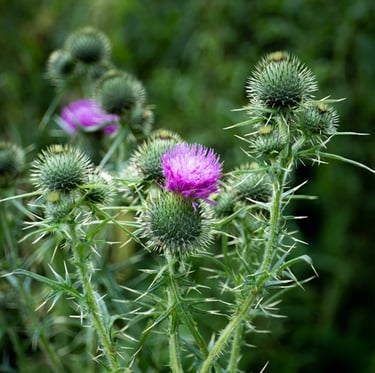




Bull Thistles (Spear Thistles) have a spiny appearance and striking purple flowers, which should be avoided when it comes to natural weed killing. After growing it we found that it forms a deep green rosette in its first year and can reach up to 1,8m (6 ft) tall in the second. This native thistle weed is a favorite among pollinators and adds a wild, natural beauty to gardens.


Bull Thistle


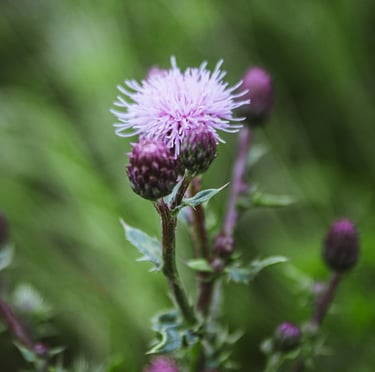

Canada Thistle
Despite its name, the Canada Thistle originates from Europe similar to the Alpine Tistle. This perennial species has wavy lobes and small, colorful flowers. It can grow up to 1,8m (6 ft) tall, parallel to the Bull Tistle, and blooms from June to September, providing a long-lasting floral display.




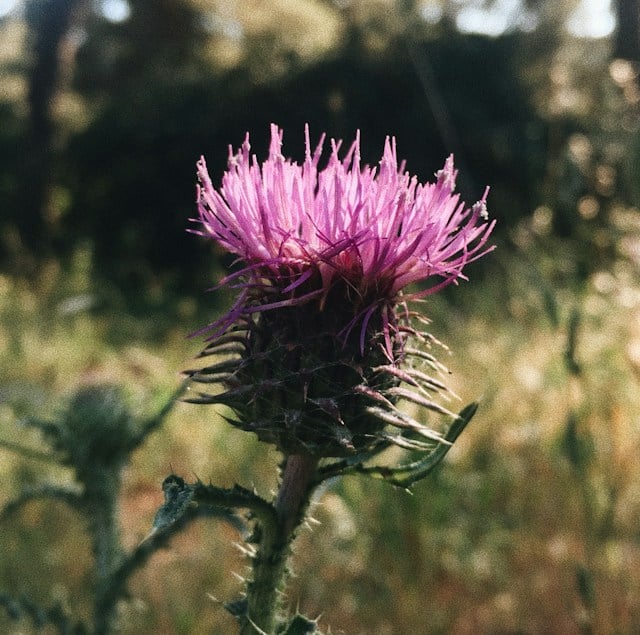

Musk Thistle
Also known as the Nodding Thistle, this biennial is notable for its large, drooping purple flowers. Blooming from June to October, it's an attractive addition to any garden, offering both aesthetic appeal and ecological benefits.



Scotch Thistle
The Scotch Thistle can grow up to 3,6 m (12 ft) tall, making it a dramatic garden feature. Our experts found this in their garden and saw that this biennial has broad, lobed leaves and purple flowers that bloom from June to August. Its spiny nature adds a unique texture to garden landscapes.
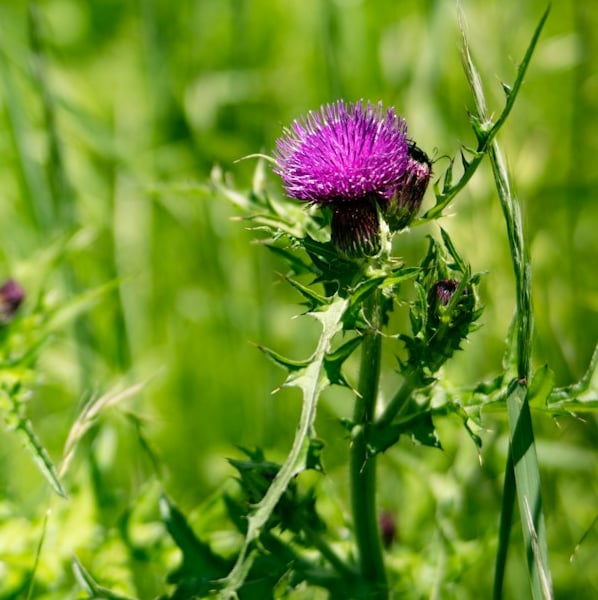






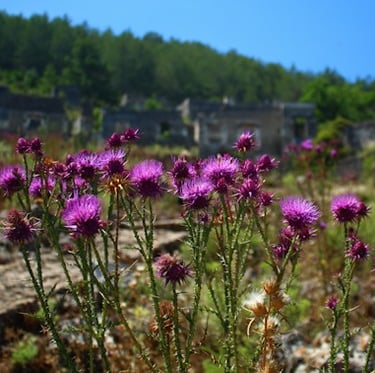
Few-leaved Thistle
This biennial or short-lived perennial has a similar color like the Bull Thistle and the Scotch Thistle but can also vary in appearance but generally features weak spines and sparingly branched stems. This purple to white flowering weed adds a colorful look to your garden space.




The Alpine Thistles are very commonly found in the summertime between June and July like most of the Alpine Flowers. This variation of amazing and stabile flowers have adapted to the Alpine areas of the Alps, they can endure low temperatures down to ca. 3°C (37°F).
Alpine Tistle
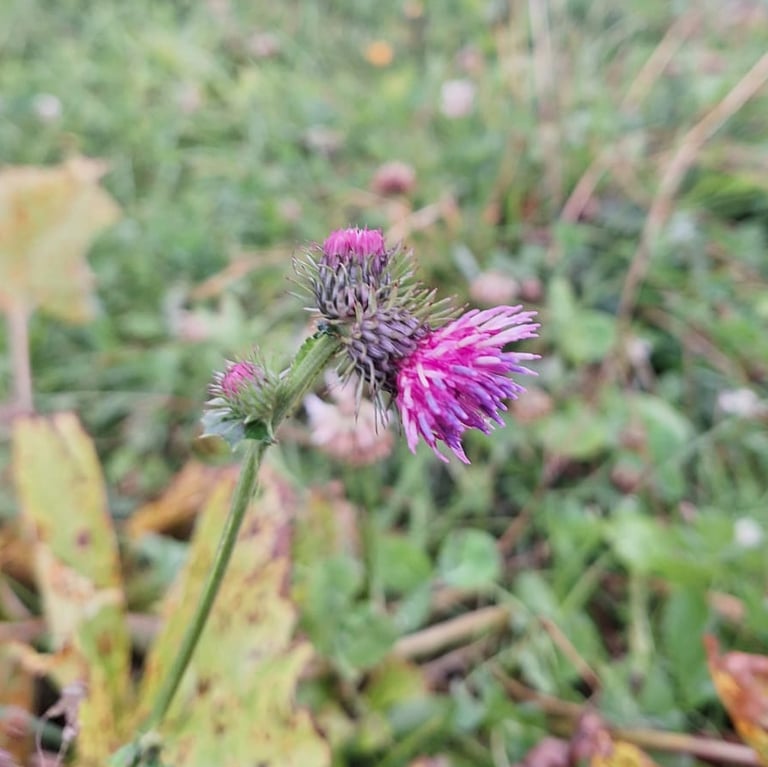

There are many types of beautiful Thistels weeds that are not worth cutting away, but how do they support local ecosystems and how do you identify invasive and non invasive Thistles?
Frequently Asked Questions
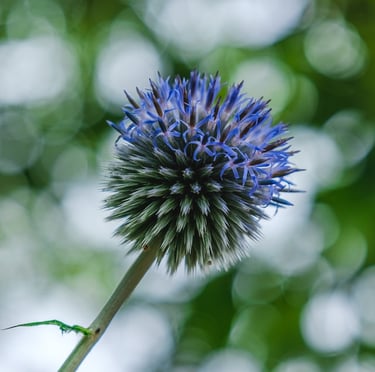

Are All Thistle Weeds Invasive and Harmful to Gardens?
No, not all thistles are invasive. While some species can be problematic, many native thistles are beneficial to ecosystems, providing food for pollinators and birds.




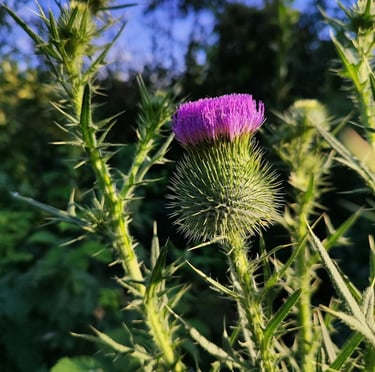

How Can I Differentiate Between Invasive and Non-Invasive Thistles?
Identification involves examining characteristics like the spines on the stem, the shape of the bracts, and the color and size of the flower heads. Some native thistles have specific features that distinguish them from invasive ones.


How Do Thistles Support Local Ecosystems?
Thistles provide nectar and pollen to bees and butterflies, and their seeds are a food source for birds. They also help maintain ecological balance by competing with invasive thistle species.
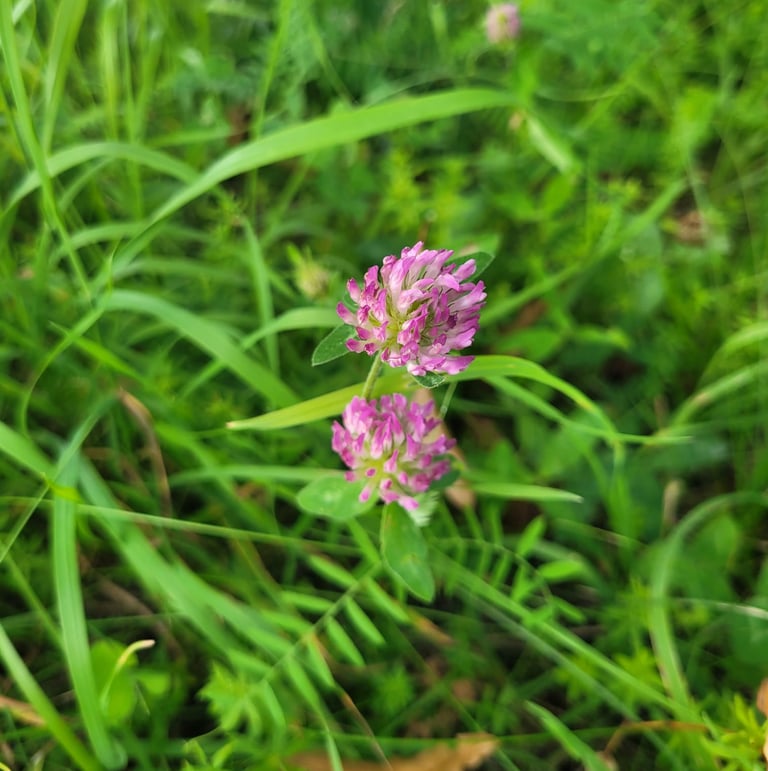





Sources
Nature and Sustainability uses only high-quality sources, including peer-reviewed studies, and other fact-dense and highly trusted sources to support the facts that we use in our articles. Please read our editorial policy to learn more about how we keep our content accurate, reliable, and trustworthy.
Scotch Thistle: Washington State Noxious Weed Control Board
Musk Thistle: Carduus nutans - Wikipedia
Bull Thistle: Cirsium vulgare - Wikipedia
Alpine Thistle: Carduus defloratus L., Alpine thistle (World flora) - Pl@ntNet identify (plantnet.org)
Thistle General Information (FAQ): Thistle | Purple, Edible, Invasive | Britannica, Thistle - Wikipedia
Share this article:




Article By:
Calin has been in the garden industry for 5 years and knows a lot about gardening and plants. He owns this website and is responsible for most of the content.
Reviewed By:


Florin, a more technical guy, is responsible for the design, reviewing the articles and making improvements, and optimizing for SEO so that everything we publish looks deam good.







